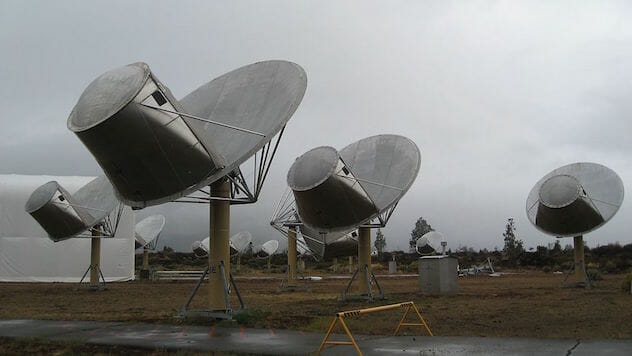Revisiting Drake’s Equation updates possibility of alien life

When you look up in the night sky, you see … well, mostly nothing anymore. On a clear night, if you’re lucky enough to live in an area without much light pollution: the moon, a planet (probably Venus), and the brightest of stars. But there’s more out there — billions of stars and maybe some extraterrestrials.
The Search for Extra-Terrestrial Intelligence (SETI) Institute, a nonprofit research group near Silicon Valley, is still trying to guess the chance that other beings exist and that we could make contact. Scientist Frank Drake developed an equation to find an estimate. The equation uses seven variables: the rate of star formation, the fraction of stars with planets, the number of planets suitable for life, the fraction of those planets where life appeared, the number that became intelligent, and how long that civilization lasted. When Drake first plotted the numbers 60 years ago, his low estimate was 1,000 stars with civilizations able to make contact. But as research churns out more data, that number only goes up.
Here’s Drake’s Equation, where N equals the number of communicable civilizations:
N = R*fpneflfifcL
Of the seven variables, the rate of star formation remains relatively fixed. Drake’s original estimate of one star formed per year was low, but not drastically so. Each new star gives the possibility of extra terrestrials, but so does each star already in the Milky Way.
According to NASA, there are already between 100 and 400 billions stars in our galaxy alone. Each star could have planets very much like ours, which concerns the second and third variables in Drake’s equation. NASA’s Kepler Mission returned the most recent data on this front to us over the last few years. It has discovered more than 4,000 possible planets, including 1,000 that meet NASA’s minimum criteria for being planet-like. When looking at the stars, finding planets turned out to be relatively easy for Kepler. What this seems to suggest is that more often than not, a star has satellite planets. But can they support life?
-

-

-

-

-

-

-

-

-

-

-

-

-

-

-

-

-

-

-

-

-

-

-

-

-

-

-

-

-

-

-

-

-

-

-

-

-

-

-

-








































